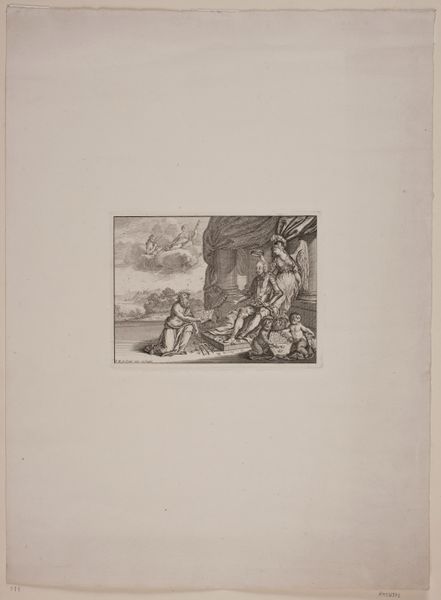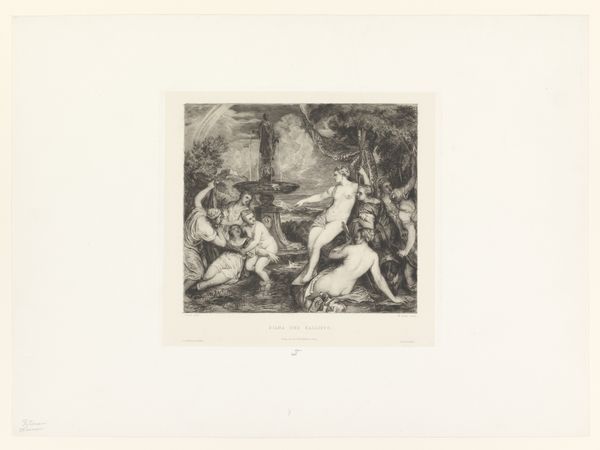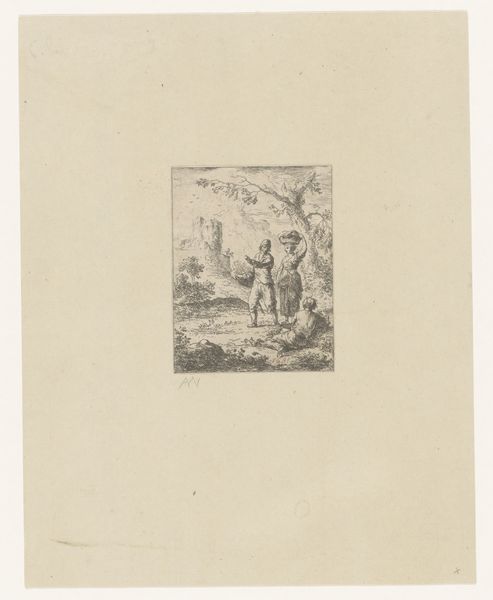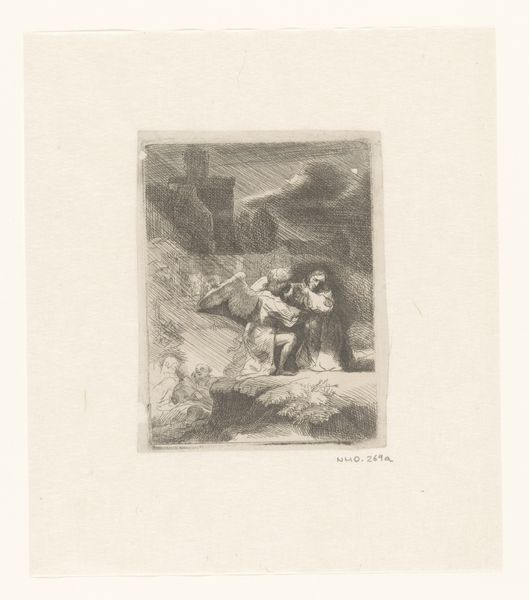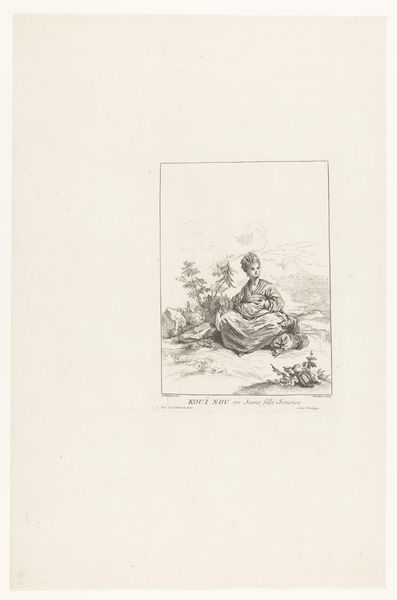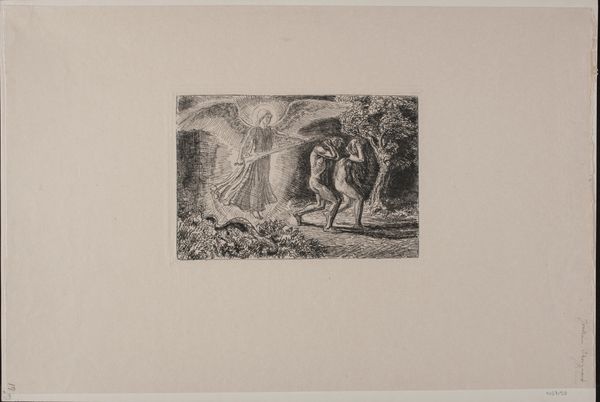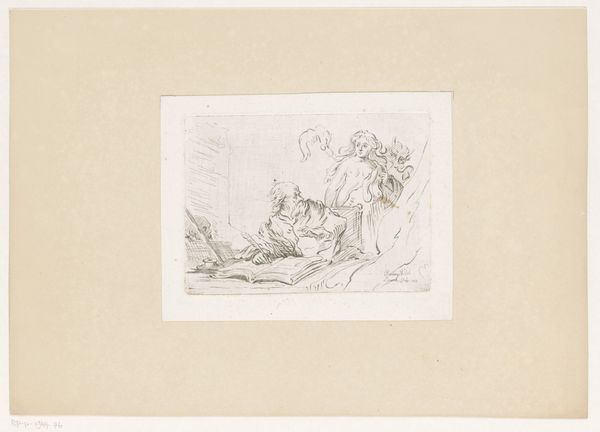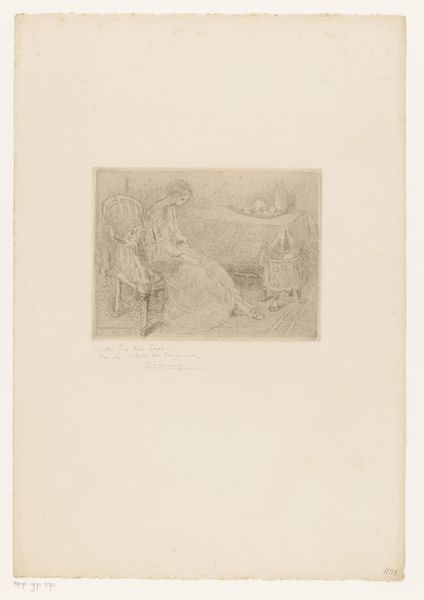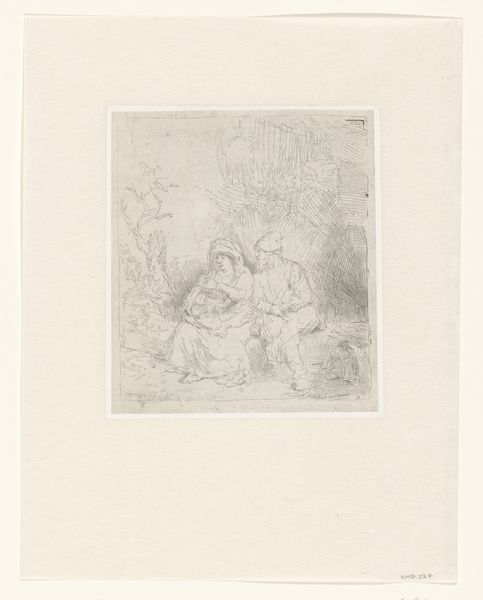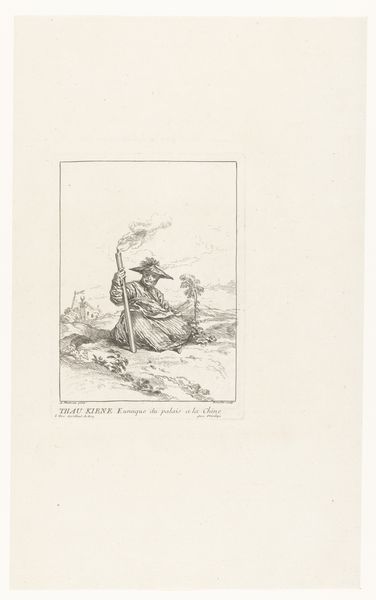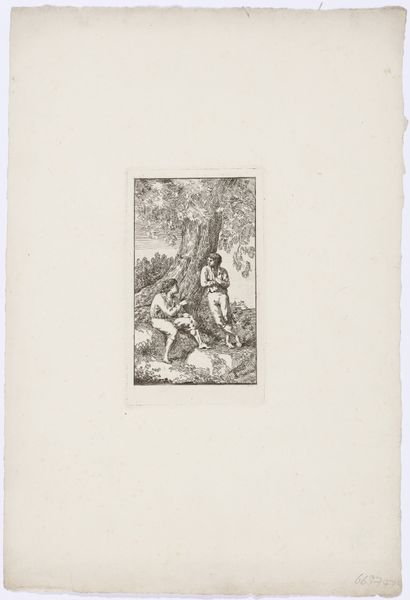
Dimensions: height 132 mm, width 106 mm
Copyright: Rijks Museum: Open Domain
Curator: Here we have Léopold Flameng’s 1859 etching, "The Flight into Egypt: a Sketch". Editor: It has such a sketchy quality as the title suggests, and because it’s an engraving, it almost looks mass-produced despite depicting this holy event. How do you see this piece? Curator: I’m particularly interested in the choice of etching, a reproductive medium. This print democratizes a religious narrative, making it accessible beyond the elite. Consider the economic context of 19th-century France – industrialization, shifting class structures – how might this affect the reception of such an image? Editor: So, by using printmaking, Flameng wasn’t just creating art; he was participating in the mass communication of religious narratives? Was that a common approach? Curator: Exactly. Etchings, unlike unique paintings, could be disseminated widely, influencing popular perceptions and devotional practices. Think about the labor involved: the craftsman meticulously creating the plate, the press operators printing multiples, the distributors bringing the image to different audiences. This is devotional imagery produced in a capitalist mode. How does understanding the material production of the image shift your interpretation? Editor: It makes me see the scene as less about the singular moment and more about the wider community consuming the story and maybe seeing themselves in it. It’s like…the flight into Egypt becoming less divine and more human, more about ordinary people seeking refuge. Curator: Precisely. It’s about the accessibility of the narrative, achieved through a specific method of production. We must consider not just what is depicted, but how its creation and dissemination shaped its meaning. Editor: That’s given me a lot to think about regarding the art production and historical access of a piece!
Comments
No comments
Be the first to comment and join the conversation on the ultimate creative platform.
